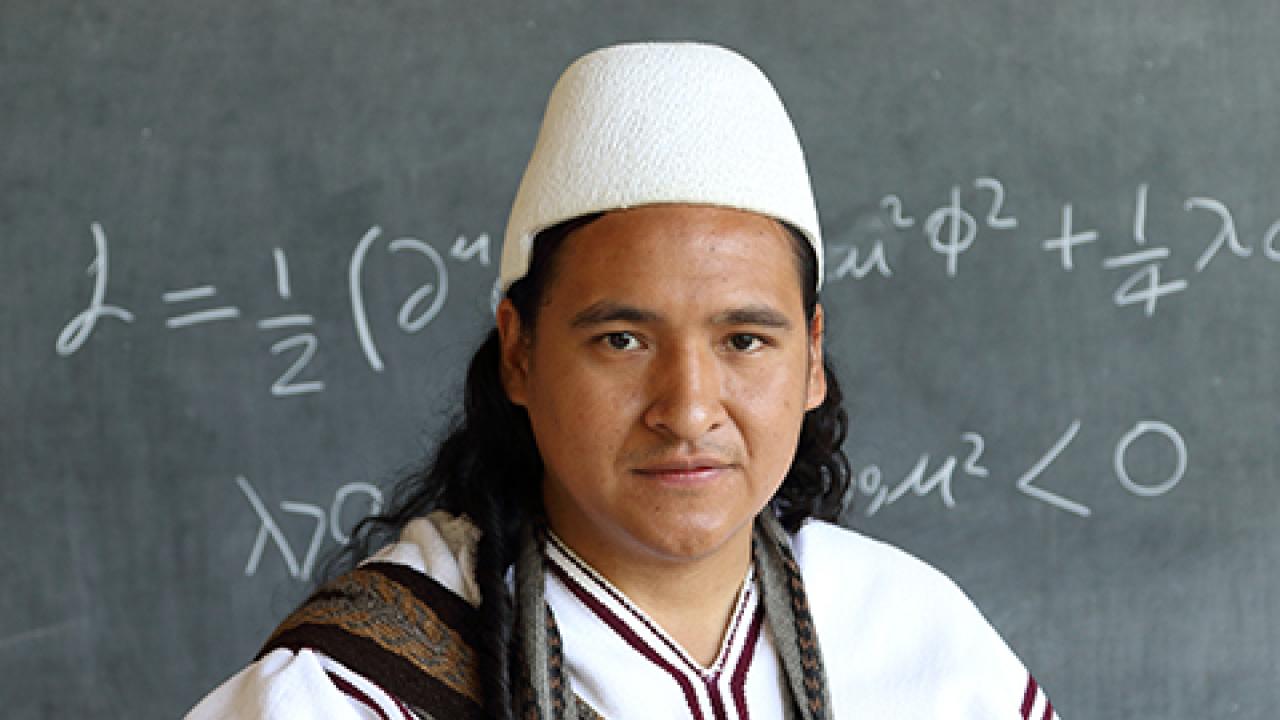
The natural beauty of Colombia’s Sierra Nevada de Santa Marta, an isolated mountain range on the northern coast of the country, is undeniable. Rising from the shores of the Caribbean to more than 5000 meters, the range stands as a case study in biodiversity. From the tropical foliage carpeting their lower plains, to the cloud forests and glaciers at upper elevations, the mountains support thousands of rare plant and animal species.
For the Arhuaco, one of four indigenous communities that populate the slopes of the Sierra Nevada, the range is the heart of the universe. Their ancient wisdom holds that the mountains are sacred, a place from which all living things originated. For thousands of years the Arhuaco and the other communities have nurtured their spiritual connections to their environment by living in unison with nature, preserving the delicate balance between their livelihood and a location named by the IUCN as the most irreplaceable site in the world for threatened species.
Teyrungumu Torres, a member of the Arhuaco community, grew up in a small village in the Sierra Nevada. The closeness of his ancestral culture with its environment sparked an interest in understanding nature at a deeper level. His quest for knowledge would take him on an educational journey that would lead him to ICTP. How and why he decided to study physics is a tale of two cultures that perfectly illustrates the power of science as a universal language.
By about age five, Arhuaco children begin a spiritual indoctrination of learning the value of living harmoniously with nature. Knowledge passes from one generation to the next by spiritual leaders, known as Mamos, and other members of their communities. The Mamos see themselves as the guardians of the heart of the world—the Sierra Nevada—protecting and nurturing it through ritual offerings, songs and prayers to maintain the equilibrium of life, not only for the sacred mountain range but for the whole world.
This indigenous world view has not always been exclusive. Over the years, missionaries have brought religion to the Arhuaco and other ancient communities, introducing ideas that conflicted with their values. “The community thought that a way to deal with this was to get to know a lot about Western knowledge in law, science, and other fields, while preserving their own values and traditions,” explains Torres. He wondered what the Western perspective could teach him about nature, and at 14 decided that physics was the way to go: “It is the fundamental science that addresses and explains natural phenomenon,” he says, adding, “My goal is to find the essence of the mechanisms and laws that govern phenomena at the very small scales.”
Torres, the youngest in a family of five children, became the first Arhuaco to earn a bachelor’s degree in physics, and he is now pursuing a master’s degree at the National University of Colombia in Bogota. His bachelor’s thesis explored the mechanism of spontaneous symmetry breaking, and his master’s work is focused on quantum mechanics.
Thanks to a grant from ICTP, Torres was able to enrich his studies by participating in a two-week Summer School on Particle Physics—his first time outside of Colombia. ICTP alumni at his university convinced him of the value of attending an ICTP activity, not only for the science but for the unique networking opportunities it would provide. “They told me that ICTP’s mission is important because it serves as a tool for many communities to understand each other through the universal language of science,” he recalls.
Torres retains a sense of his ethnic roots when discussing his education and his career goals. For instance, he shares that in his community, knowledge is not seen as an individual matter but rather becomes the knowledge of the entire community and beyond. “I hope that scientific knowledge serves as a bridge for peace and understanding, and that my knowledge will help not only my community but also Colombia, where there are so many social and political struggles,” he says.
He is thankful for ICTP’s support, which has opened new doors not only for him but also for other disadvantaged groups. “I feel this is a great opportunity for the many communities that struggle enormously to have access to higher education, and in particular to advanced education, to enable them to fill some gaps and permit them to compete internationally,” he says.
Torres’ roots are reflected in his clothing as well: at the ICTP conference, he wore a traditional Arhuaco tunic, woven by him, as well as the white, cone-shaped hat worn by Arhuaco men to symbolize the snowfields of the sacred peaks they protect. Like the generations of Arhuaco before him, he strives for an equilibrium between his culture and his environment. Few in his community have traveled so far, or explored so deeply the nature that they hold so sacred.
Torres hopes that his educational odyssey will end where it all started, at the heart of the universe. “I would like to return to my community after finishing my education and achieving a career in science,” he says, adding, “I hope that in coming back, there is the chance for many people of all ages to get more familiar with physics. I also would encourage other young members of my community to follow in my footsteps to study science and math.”
--Mary Ann Williams (with thanks to ICTP postdoctoral fellow Damian Kaloni Mayorga Pena for his translation assistance)
















